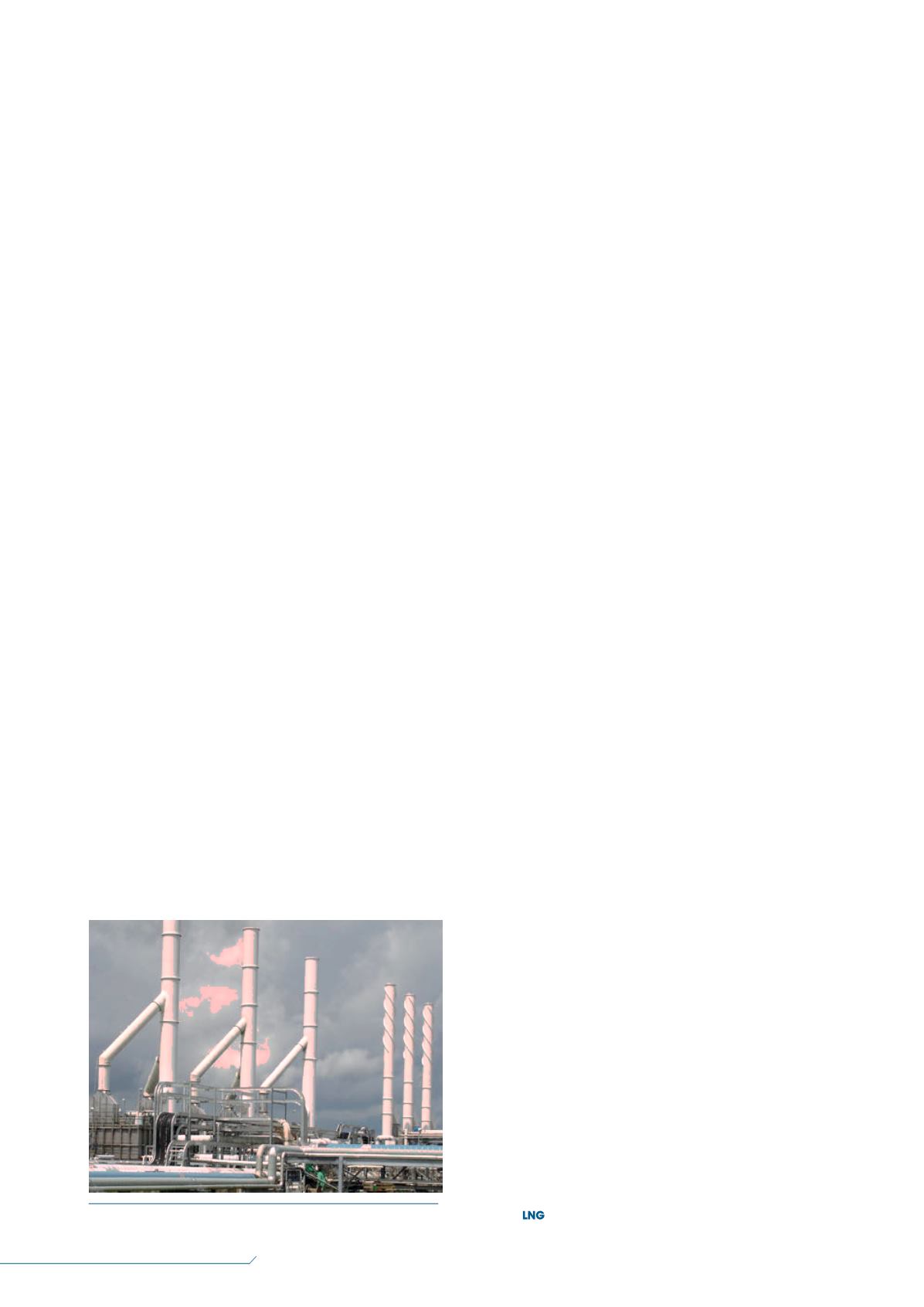
62
LNG
INDUSTRY
JULY
2016
The factors in the equation are defined in the CINI specification.
CINI is striving to establish safety factors within a complex
environment where stresses vary within the layers of the insulation.
LNG insulation system risk
mitigation beyond standards
Risks in the context of an insulation system arise from a multitude
of process, environmental, and situational factors. Process factors
are generally well understood and quantifiable, and include the
following issues:
Process temperatures and the expected variations.
Pipemetallurgy and corrosion risks.
Expansion/contraction.
Pipe diameter/weight, etc.
Similarly, environmental factors are generally well-quantified:
Ambient temperature variations.
Solar radiation intensity.
Ambient humidity swings.
Rainfall.
Wind.
Situational factors are generally not quantifiable and include
issues such as operator and maintenance crew training, spare
parts availability, proximate insulation fabrication shops, water
wash-down practices, etc.
Thus, the quantification of the expected variability among the
aforementioned factors establishes the framework for a basic
design of the insulation system: insulant material, thickness,
number of layers, pipe coatings, butt and longitudinal joint design,
possible inclusion of inner-layer vapour barriers, metallurgy and
gauge of jackets, sealing of jacket seams, number of expansion
joints, number of pipe hangars, etc. Considering the factors, a
liquefaction facility in Nigeria has an inherent set of risks quite
different from a regasification plant in Canada.
After the insulation system’s basic design is proposed, the risk
mitigation process continues by assessing the risks inherent within
the basic design, and then prioritising the risks in terms of
magnitude and probability of occurrence. In addition to operational
risks, considerationmust be given to delivery, storage, installation,
commissioning, andmaintenance protocols. The ‘ideal’ insulation
systemdesign is not in fact ideal if poor on-site storage
compromises its integrity. An ideal systemdesign for modular
components shipped across long distances may be different than a
non-modularised plant, and so forth.
However, what happens, for instance, when the insulation
systemoperates for two weeks at ambient air temperatures above
the nominal maximum; or what if steamblows to clean pipe during
pre-commissioning exceedmaximumdesign temperatures of the
insulation system? Additionally, there are situational factors that
arise during operations that may not have been previously
considered, such as the potential for mechanical abuse (e.g. forklift
bumps), chemical abuse fromequipment cleaning, excessive
vibration, etc., and, of course, the unpredictable risk of typhoons,
explosions, and fires.
Risk mitigation primer
Risks addressed in the prior paragraphs can be generally addressed
either at the design stage, or during the operational phase. While
it is true that, generally, risks aremost cost-effectively mitigated at
the design phase, the reality is more complex. A comprehensive
risk analysis is necessary tomake such determinations. For
instance, mechanical abuse can bemitigated by insulation with
greater compressive strength, thicker jackets, stairs over pipe
likely to be stepped on, warning signs, etc., depending on the
circumstance.
Design risk mitigation
Risks can bemitigated at the design stage by increasing the
design factor. In essence, this equates to expanding the assumed
nominal range of expected process, environmental, or situational
factors. Alternatively, risks can bemitigated by adding a safety
factor. In other words, simply adding X%more thickness, Y%more
strength or by coating a pipe for corrosion that would not have
otherwise been coated, etc. Note that definitions such as safety
factor, safety margin, designmargin, etc. vary by industry and even
within different contractors. Stakeholders should insist on clear
understandings.
Operational phase risk mitigation
An LNG plant manager should be armed with an understanding
of what risks have been considered, to what extent they have
been accommodated within the design, and which risks may
need to bemitigated in-situ. The formidable obligations of the
plant manager then become: tracking identified risks; prioritising
new risks; quantifying the ongoing relevance of old vs new risks;
planning for thematerialisation of foreseeable risks; and evaluating
effectiveness of the risk management programme throughout the
project.
There should bemacro key performance indicators (KPIs) that,
when they stray frompredictions, may help identify problems.
Example KPIs include auto-consumption, LNG recovery, rundown
to tank, gas shortfall, high emissions, utilisation, etc. However, root
cause analysis of any deficiencies additionally requires good
log-taking, trending and archiving, as well as audio/visual alertness
fromoperators.
Summary
CINI standards are a great step forward in the effort tomitigate
insulation system risks at LNG facilities. They identify which physical
properties are themost pertinent, establishminimum/maximum
values, dictate the requisite ASTMor EN test methods, and require
that many physical properties bemeasured at LNG temperatures.
However, a good risk mitigation programme should track,
anticipate and plan for failures or problems that should not
occur.
Figure 3.
Elba Island LNG facility.


